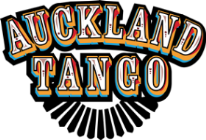Tango Mahi “Tanda of the Week” – Edgardo Donato y sus muchachos (i.e. Edgardo Donato and his boys”) featuring three vocalists. His choice of orquesta name reflected Donato’s sense of humour, his mischievous streak and his desire that the orquesta not be a typical one.
Edgardo Donato played classical violin professionally from age 21 (from 1917), took up jazz violin soon after, and was playing and composing jazz and tango music from the early 1920s. In 1922 his composition “Julian” was a huge hit in Argentina and Uruguay for two popular female actresses and vocalists, and his 1925 composition, “A Media Luz” became one of the four most recorded tango songs ever, including versions by his friend Carlos Gardel, and many tango orquestas.
He set up an orquesta in 1927 with violinist Roberto Zerrillo, then his own orquesta in 1930, with other top-quality musicians including two of his brothers. They developed a repertoire of generally festive, cheerful and danceable music with a strong rhythmic feel that was not unlike the style adopted from the mid-1930s by the D’Arienzo orquesta. Particular differences for the Donato orquesta were an absence of sad songs, the inclusion of a piano accordion (played by then teenager Osvaldo Bertone), and the playing of instrumental solos in live performances and recordings.
The orquesta was very popular through the 1930s in Buenos Aires and in Uruguay amongst the dance community and the general public. It was featured in the 1933 movie “Tango” (the first Argentinian “talkie” complete with soundtrack), played at the funeral of Carlos Gardel and performed in frequent live events and radio broadcasts.
—–
This week’s Tanda of the Week starts with the very popular song “Se Va La Vida” (“Life is short, so make the most of it”), released in 1936 that led to Horacio Lagos becoming locked in as the orquesta’s ongoing lead vocalist.
The second song “Carnaval de mi barrio” (Carnival or party in my neighbourhood”), was a 1939 recording for which Donato agreed to Horacio’s wife Lita Morales joining Horacio in a duo vocal role, resulting in another hit.
To build on the popularity of the duo vocals, Donato encouraged his bandoneon player Romeo Gavioli, who was also a great singer, to perform duos with Horacio, and in 1940, trios with both Horacio and Lita, including for the third song in the tanda “Sinfonia de arrabal” (“Symphony of suburbia”); yet another hit.
—–
While not relevant to the tanda, it might have been Donato’s sense of mischief that led him to choose Lita and Romeo to record an intense love song he wrote called “Yo to Amo” (“I love you”), soon after which:
• Lita left the band on maternity leave,
• Considerable friction developed between Horacio and Romeo,
• Edguardo disbanded the orquesta (which his brother Osvaldo revived a few years later without Edgardo).
Edguardo established a new quartet in 1944 (Quartetto Los Caballeros).
It has been speculated that a love triangle had developed between the vocalists. The rumours were further enflamed soon after Lita’s 1956 recording and release of the song “Comadre” with lyrics that could be interpreted as advice to never look back at old loves, “a man is not worth the pain”. Sadly, in 1957 Romeo committed suicide by driving his car off the pier.
On a happier note, here is a clip of France-based maestros Ozgur Karahan and Maria Filali dancing in Paris to “Carnaval de mi barrio”:

